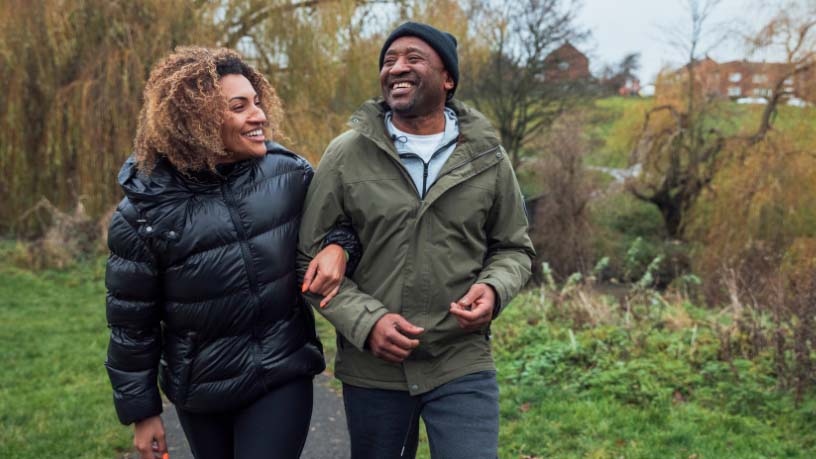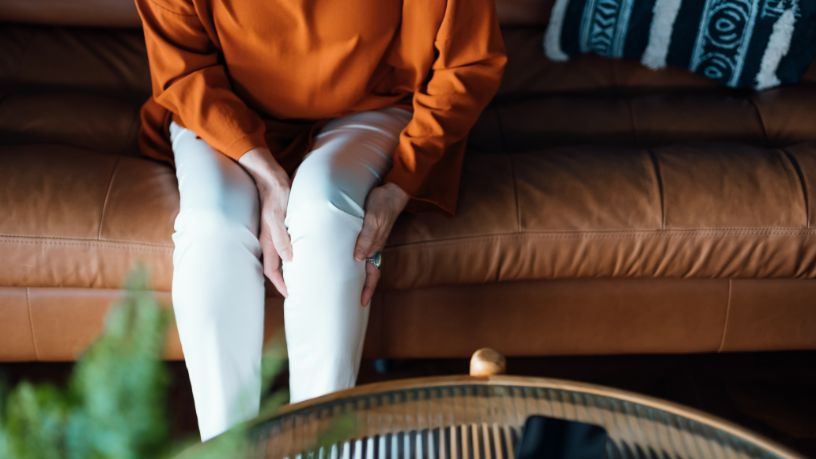Your menisci help cushion your lower legs and stabilise your knees.
Key takeaways
Tearing one can be painful. There are a range of common signs and symptoms of the injury.
Make sure you know what the different recovery options are.
If you’re a sports fan, you may be familiar with anterior cruciate ligament (ACL) injuries. But how much do you know about meniscal tears?
What are your menisci?
Your 2 menisci are pads of cartilage in your knee joints, between your thigh and shin bones.
Each meniscus acts like a shock absorber, cushioning the impact of your upper legs on your lower legs. They also help to stabilise your knee joints and keep your knee movements smooth.
What's a meniscal tear?
A common knee injury, meniscal tears are often caused by twisting your knee joint when playing games like footy, soccer, basketball or tennis.
Like an ACL injury, tearing your meniscus can be incredibly painful and is often signified by a loud ‘pop’ sound.
The main difference between the 2 injuries is that after a meniscal tear, it can be hard to fully extend or bend your knee, and your joint might feel like it’s locking in place, which usually doesn’t happen with an ACL injury.
Recovery time from a meniscal tear is generally shorter, too. It usually heals within 3 months, either with or without surgery. An ACL injury, on the other hand, can take between 3 and 6 months to recover from, even if you don’t need surgery (and up to a year if you do).
You can generally still immediately walk following a meniscal tear, and many athletes keep playing with the injury. But, over the 2 or 3 days after the tear, your knee may slowly become stiffer and more swollen.
Meniscal injuries are not just athletic-based. As you get older, the cartilage in your knees usually wears down, and a simple awkward twist could be enough to cause a tear.
Common signs and symptoms of a meniscal tear include:
- an audible clicking or popping sound during the injury
- pain in your knee (which can vary from severe to mild and, for some, can come and go)
- swelling (usually several hours after the injury)
- feeling like your knee is catching or locking
- a ‘loose’ feeling in your knee (like it’s going to give way)
- being unable to fully bend and extend your knee
- a tender feeling along the line of your knee’s joint.
Treatment
Unfortunately, most meniscal tears don’t heal on their own. If you have symptoms of the injury, you should see a GP or sports medicine professional as soon as possible.
Treatment will depend on a variety of factors, including:
- the size and location of the tear
- the severity of the injury
- your age.
The first thing you should do following a meniscal tear is manage the pain and swelling using the ‘RICE’ and ‘HARM’ methods. For RICE: Rest for the first 2 or 3 days, ice the painful area with a cold compress, compress the injured area with a bandage and elevate the injury.
And for HARM: Avoid heat, alcohol, running or other moderate activity, or massaging the injured area.
A doctor or physiotherapist may recommend a series of exercises to improve movement and function in your knee.
Common approaches to recovering from a meniscal tear include:
Physiotherapy
Either with or without surgery, physiotherapy is an important part of recovering from a meniscal tear. The aim is to help your knee get back its full range of movement, strength and stability. For many people, the results of physiotherapy can be just as effective as surgery.
After assessing your knee, your physiotherapist will most likely plan an individualised program of rehabilitation exercises. These will help gradually strengthen your knee and leg muscles. If you’re having difficulty putting weight on your knee, you may need to use crutches or wear a brace for temporary support.
Medication
Over-the-counter painkillers like paracetamol or ibuprofen are commonly used to help with pain from a meniscal tear. However, your doctor may prescribe stronger painkillers if your pain is severe.
Bupa Health Programs
Discover our programs designed to help you recover and stay out of hospital where you can.
Surgery
If you have a large meniscal tear, or if physiotherapy hasn’t worked by itself, you may need an operation to either repair your torn meniscus or, in some cases, remove the damaged part of the cartilage.
An orthopaedic surgeon typically performs a procedure during a knee arthroscopy. This uses a very fine video camera with a light and tiny surgical instruments that are inserted through small cuts in your knee.
Following surgery, you will most likely require physiotherapy to help restore your knee back to its normal function.
Always talk to your medical team about the pros and cons of surgery, and how it might help in your unique circumstance, before committing to a procedure.
Resources
The Australian Physiotherapy Association can help you find a physio near you.
Chronic Pain Australia provides education and support for those living with chronic pain.
Musculoskeletal Health Australia provides information and support for people living with arthritis and musculoskeletal conditions. Visit their website or call them on 1800 263 265.

At Bupa, trust is everything
Our health and wellbeing information is regularly reviewed and maintained by a team of healthcare experts, to ensure its relevancy and accuracy. Everyone's health journey is unique and health outcomes vary from person to person.
This content is not a replacement for personalised and specific medical, healthcare, or other professional advice. If you have concerns about your health, see your doctor or other health professional.
You might also like...
What happens after an ACL injury?
An ACL injury can be painful, and may require medication, physiotherapy and even surgery. Get to know your options.
7 things I wish I knew before knee surgery
Knee surgery is a major operation that may require months of intensive recovery. Discover 7 common insights from those who’ve done it.
5 best exercises to strengthen your knee after surgery
If you’ve had knee surgery, support your recovery with these 5 physiotherapist-approved exercises. Regain strength and mobility safely at home.
Knee pain: A basic guide
Your knees are the largest joints in your body. They’re also among the most accident prone. Get to know the basics of knee pain.





